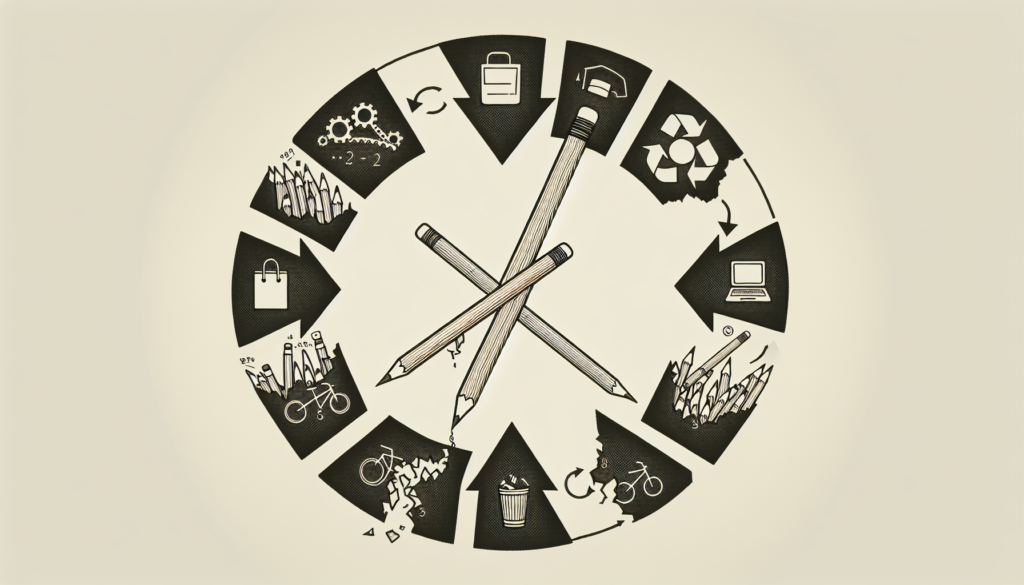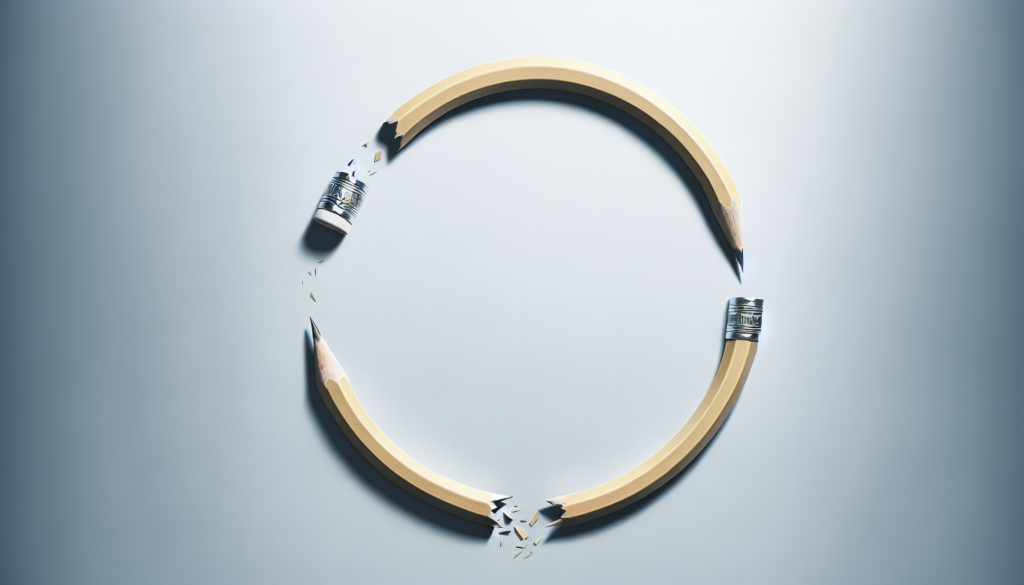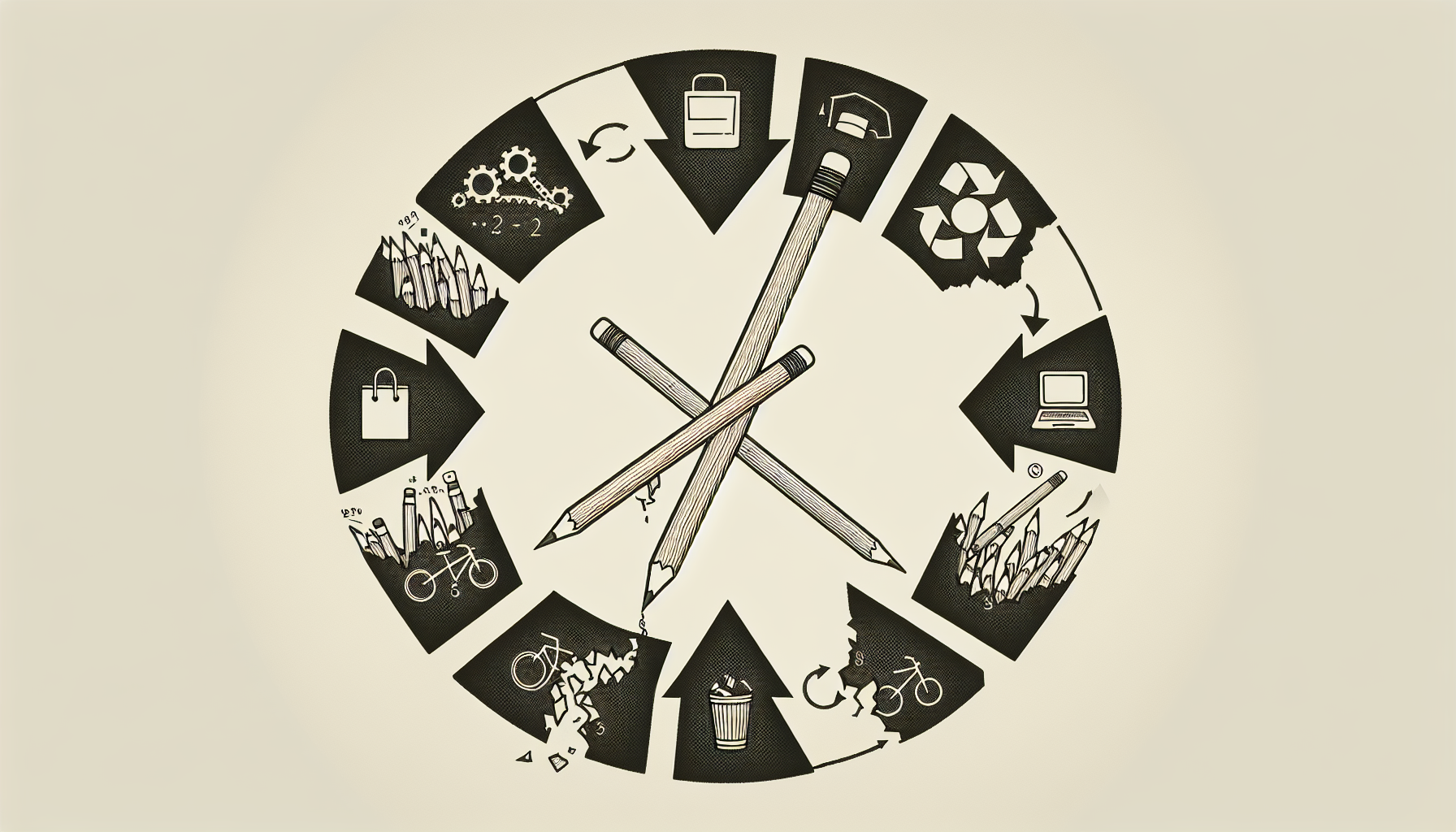In today’s rapidly evolving world of consumer products, it is important to have a clear understanding of their lifecycle. From the moment a product is introduced to the market to its eventual decline, this intricate process shapes the way we interact with everyday items. By grasping this lifecycle, you can gain valuable insights into the trends and patterns that drive product success and even make more informed purchasing decisions. So, let’s take a closer look at the fascinating journey that consumer products go through, and how it impacts both businesses and consumers alike.

Introduction
Welcome to this comprehensive article on understanding the lifecycle of consumer products. As a consumer, it is important for you to have an understanding of how products evolve and change over time. In this article, we will delve into the definition of consumer products, explore the stages of the product lifecycle, discuss factors influencing the lifecycle, examine strategies for managing the lifecycle, analyze case studies, highlight challenges in managing the lifecycle, and address the environmental impact and sustainable management of the product lifecycle. Let’s get started!
H2 Heading 1: Definition of Consumer Products
Consumer products refer to goods that are purchased and used by individuals for personal or household purposes. These products are intended for direct consumption and can range from everyday essentials to luxury items.
H3 Subheading 1: Types of consumer products
Consumer products can be classified into several types. The first type is convenience products, which are low-cost, frequently purchased items that consumers buy without much thought or effort. Examples include snacks, toiletries, and newspapers.
The second type is shopping products, which are products that consumers compare and evaluate before making a purchase decision. These products often require more time and effort in the decision-making process. Examples include clothing, furniture, and electronics.
The third type is specialty products, which are unique or high-end products that consumers have a strong preference for and are willing to search and pay for. Examples include designer luxury goods, limited edition items, and high-end technology gadgets.
The fourth type is unsought products, which are products that consumers do not actively seek out or think about purchasing, but may be necessary in certain situations. Examples include insurance, funeral services, and emergency medical supplies.
H3 Subheading 2: Characteristics of consumer products
Consumer products have certain characteristics that distinguish them from other types of goods. One characteristic is perishability, which refers to the limited shelf life of certain products. Perishable products, such as fresh food and flowers, need to be consumed or used within a specific timeframe to avoid spoilage.
Another characteristic is durability, which refers to the expected lifespan of a product. Durable consumer products, such as appliances and vehicles, are designed to last for an extended period of time and withstand regular use.
Consumer products also have varying degrees of tangibility. Tangible products are physical items that can be touched, held, and seen. Examples include clothing, electronics, and furniture. Intangible products, on the other hand, are non-physical offerings such as services. Examples include healthcare, transportation, and financial services.
H2 Heading 2: Stages of the Product Lifecycle
Every consumer product goes through a lifecycle that consists of four distinct stages: introduction, growth, maturity, and decline. Understanding these stages can help businesses and consumers make informed decisions regarding product development, marketing strategies, and allocation of resources.
H3 Subheading 1: Introduction stage
The introduction stage is the first stage of the product lifecycle. During this stage, a new product is introduced to the market and faces various challenges. This is a period of low sales and high costs for businesses as they invest in research and development, production, and marketing activities. Consumers are usually unaware of the new product or may be hesitant to try it.
To overcome these challenges, businesses focus on creating awareness and generating interest in the new product. They often use promotional tactics, such as advertising and public relations, to educate and persuade consumers to try the product. Pricing strategies may be set at a premium to recoup initial costs and create a sense of exclusivity.
H3 Subheading 2: Growth stage
The growth stage is characterized by increasing sales and expanding market acceptance. Consumers become more aware of the product, and demand starts to grow. This stage presents opportunities for businesses to increase market share and profitability.
During the growth stage, businesses invest in expanding production capacity, improving product quality, and enhancing distribution channels. They also engage in market segmentation and targeting to reach specific consumer segments. Pricing strategies may be adjusted to capitalize on economies of scale and competitive positioning.
H3 Subheading 3: Maturity stage
The maturity stage is the longest stage of the product lifecycle and is marked by stable sales and market saturation. The product has achieved widespread acceptance, and competition intensifies as more businesses enter the market.
In the maturity stage, businesses focus on maintaining market share and profitability. They may introduce product variations or improvements to differentiate themselves from competitors. Pricing strategies become more competitive, and promotional tactics aim to reinforce brand loyalty. Businesses may also explore new distribution channels to reach untapped markets.
H3 Subheading 4: Decline stage
The decline stage is the final stage of the product lifecycle. Sales start to decline as consumer demand decreases or shifts to newer alternatives. Businesses face the challenge of managing declining revenues and profitability.
During the decline stage, businesses may choose to discontinue the product or revitalize it through repositioning or relaunching. Pricing strategies may be adjusted to liquidate inventory or target remaining loyal consumers. Promotional tactics may focus on clearance sales or nostalgia marketing.
H2 Heading 3: Factors Influencing Product Lifecycle
Several factors influence the lifecycle of consumer products. Understanding these factors is crucial for businesses to adapt and make informed decisions.
H3 Subheading 1: Technological advancements
Technological advancements can significantly impact the lifecycle of consumer products. New technologies can render existing products obsolete or create demand for innovative products. Businesses must stay abreast of emerging technologies and incorporate them into their product development and marketing strategies.
H3 Subheading 2: Consumer preferences and needs
Consumer preferences and needs are ever-changing and can shape the lifecycle of products. Shifts in consumer behavior, values, and lifestyles can drive demand for new products or lead to the decline of existing ones. Businesses must conduct market research and consumer surveys to identify emerging trends and adapt accordingly.
H3 Subheading 3: Competitor actions
Competitor actions can influence the lifecycle of products. Intense competition can lead to the introduction of alternative products or pricing strategies that impact consumer preferences. Businesses must monitor and respond to competitor actions to maintain their market position.
H3 Subheading 4: Market trends
Market trends, such as economic conditions, cultural shifts, and regulatory changes, can have a profound impact on product lifecycles. Businesses must analyze market trends and adapt their strategies accordingly to remain competitive.

H2 Heading 4: Strategies for Managing Product Lifecycle
Managing the lifecycle of consumer products requires strategic planning and implementation. Here are some strategies that businesses can employ to effectively navigate each stage of the lifecycle.
H3 Subheading 1: Product development and innovation
Continuous product development and innovation are crucial to sustaining the lifecycle of consumer products. Businesses should invest in research and development to create new offerings and improvements that meet evolving consumer needs and preferences.
H3 Subheading 2: Market segmentation and targeting
Market segmentation and targeting enable businesses to focus their resources on specific customer segments. By identifying and understanding the unique needs and preferences of different consumer groups, businesses can tailor their marketing efforts and product offerings to maximize relevance and appeal.
H3 Subheading 3: Pricing strategies
Effective pricing strategies can influence consumer purchase decisions and impact the success of products at each lifecycle stage. Businesses may use different pricing strategies, such as penetration pricing during the introduction stage and discount pricing during the decline stage, to achieve specific objectives and respond to market conditions.
H3 Subheading 4: Promotional tactics
Promotional tactics play a crucial role in creating awareness, generating interest, and building brand loyalty throughout the product lifecycle. Businesses should carefully select and implement promotional activities, such as advertising, sales promotions, and social media marketing, to effectively reach and engage target consumers.
H3 Subheading 5: Distribution channels
Choosing the right distribution channels is essential for reaching target consumers and optimizing product availability. Businesses should analyze consumer preferences, geographical factors, and market trends to determine the most suitable distribution channels. This may include brick-and-mortar retail, e-commerce platforms, or a combination of both.
H2 Heading 5: Case Studies
Examining case studies can provide valuable insights into how businesses navigate the lifecycle of their consumer products. Let’s explore two notable examples.
H3 Subheading 1: Apple Inc. and the iPhone lifecycle
Apple Inc. is renowned for its successful management of the iPhone product lifecycle. The introduction of each new iPhone model creates a buzz and drives consumer demand during the introduction stage. Apple focuses on strategic pricing, innovative features, and aggressive marketing campaigns to promote growth and maintain market dominance. As the iPhone matures, Apple introduces product variations and enhancements to retain customer loyalty. This approach has allowed Apple to extend the lifecycle of the iPhone and remain a leader in the smartphone market.
H3 Subheading 2: Coca-Cola and its product diversification
Coca-Cola, a global beverage company, has effectively managed its product lifecycle through diversification. As consumer preferences have shifted towards healthier alternatives, Coca-Cola has expanded its product portfolio to include a wide range of beverages, including bottled water, teas, and juices. By adapting to changing consumer needs and leveraging its brand strength, Coca-Cola has sustained its growth and maintained relevance in the evolving beverage market.
H2 Heading 6: Challenges in Managing Product Lifecycle
Managing the lifecycle of consumer products presents several challenges for businesses. Here are some common challenges they may face.
H3 Subheading 1: Changing consumer demands
Consumer demands are dynamic and can rapidly evolve, creating challenges for businesses to meet these shifting needs. Businesses must stay agile and responsive to emerging trends and preferences to avoid product obsolescence.
H3 Subheading 2: Competitive pressures
Intense competition can disrupt product lifecycles, forcing businesses to continually innovate and differentiate themselves to maintain their market position. Businesses must closely monitor competitor actions and strive for continuous improvement.
H3 Subheading 3: Technological obsolescence
Technological advancements can render products outdated or less desirable. Businesses must invest in research and development to stay ahead of emerging technologies and incorporate them into their products to remain competitive.
H3 Subheading 4: Market saturation
Market saturation occurs when demand for a product reaches its peak, making it challenging for businesses to sustain growth. When faced with market saturation, businesses must explore new markets, diversify product offerings, or adopt new marketing strategies to extend the product lifecycle.
H2 Heading 7: Environmental Impact of Product Lifecycle
The lifecycle of consumer products has a significant environmental impact. Understanding this impact is crucial for businesses and consumers to make sustainable choices. Let’s explore the environmental implications of each stage of the lifecycle.
H3 Subheading 1: Extraction of raw materials
The extraction of raw materials, such as minerals, metals, and fossil fuels, for product manufacturing often involves significant environmental degradation. Mining operations can disrupt ecosystems, contribute to deforestation, and cause water pollution. Businesses should prioritize responsible sourcing and consider alternatives, such as recycled or sustainably sourced materials.
H3 Subheading 2: Manufacturing and production
Manufacturing and production processes consume energy, generate waste, and release emissions. These activities contribute to air and water pollution, greenhouse gas emissions, and depletion of natural resources. Businesses can adopt sustainable manufacturing practices, such as energy-efficient technologies and waste reduction measures, to minimize environmental impact.
H3 Subheading 3: Distribution and transportation
The distribution and transportation of consumer products involve the use of energy, packaging materials, and transportation vehicles, contributing to carbon emissions and waste. Businesses can optimize distribution networks, use eco-friendly packaging materials, and explore alternative transportation options, such as electric vehicles, to reduce their carbon footprint.
H3 Subheading 4: Product usage and disposal
The usage and disposal of consumer products have environmental implications. Energy consumption during product usage contributes to greenhouse gas emissions. Improper disposal, such as landfilling or incineration, can lead to pollution and waste accumulation. Businesses can promote sustainable product usage through energy-efficient designs and educate consumers about responsible disposal methods, such as recycling and proper electronic waste recycling programs.
H2 Heading 8: Sustainable Product Lifecycle Management
To address the environmental impact of the product lifecycle, businesses and consumers can adopt sustainable practices. Here are some strategies for sustainable product lifecycle management.
H3 Subheading 1: Design for the environment
Designing products with environmental considerations in mind can minimize their ecological footprint. Businesses should prioritize eco-friendly materials, energy efficiency, and recyclability in product design. This can involve incorporating sustainable design principles and using life cycle assessment tools to evaluate and optimize environmental performance.
H3 Subheading 2: Recycling and waste management
Implementing effective recycling and waste management practices is essential for reducing the environmental impact of consumer products. Businesses should collaborate with recycling organizations, provide adequate recycling infrastructure, and educate consumers about proper waste disposal and recycling methods.
H3 Subheading 3: Extended producer responsibility
Extended producer responsibility involves placing the responsibility for product disposal and recycling on the manufacturers. Businesses should adopt extended producer responsibility programs, where they take responsibility for the entire lifecycle of their products, including waste management, recycling, and end-of-life product recovery.
H3 Subheading 4: Circular economy approach
Adopting a circular economy approach involves designing products and systems that prioritize resource efficiency, recycling, and reuse. Businesses can explore circular business models, such as product-as-a-service or sharing platforms, to minimize waste and extend the lifecycle of products.
H2 Heading 10: Conclusion
In conclusion, understanding the lifecycle of consumer products is crucial for businesses and consumers alike. By comprehending the stages of the lifecycle, factors influencing the lifecycle, strategies for management, and the environmental impact, we can make informed choices and contribute to a more sustainable future. As consumers, we can support businesses that prioritize responsible product development and actively participate in sustainable practices throughout the lifecycle. Together, we can shape a more environmentally conscious and socially responsible marketplace.

